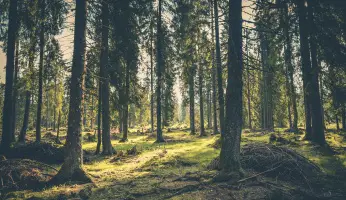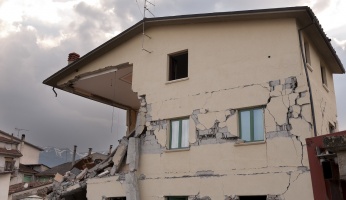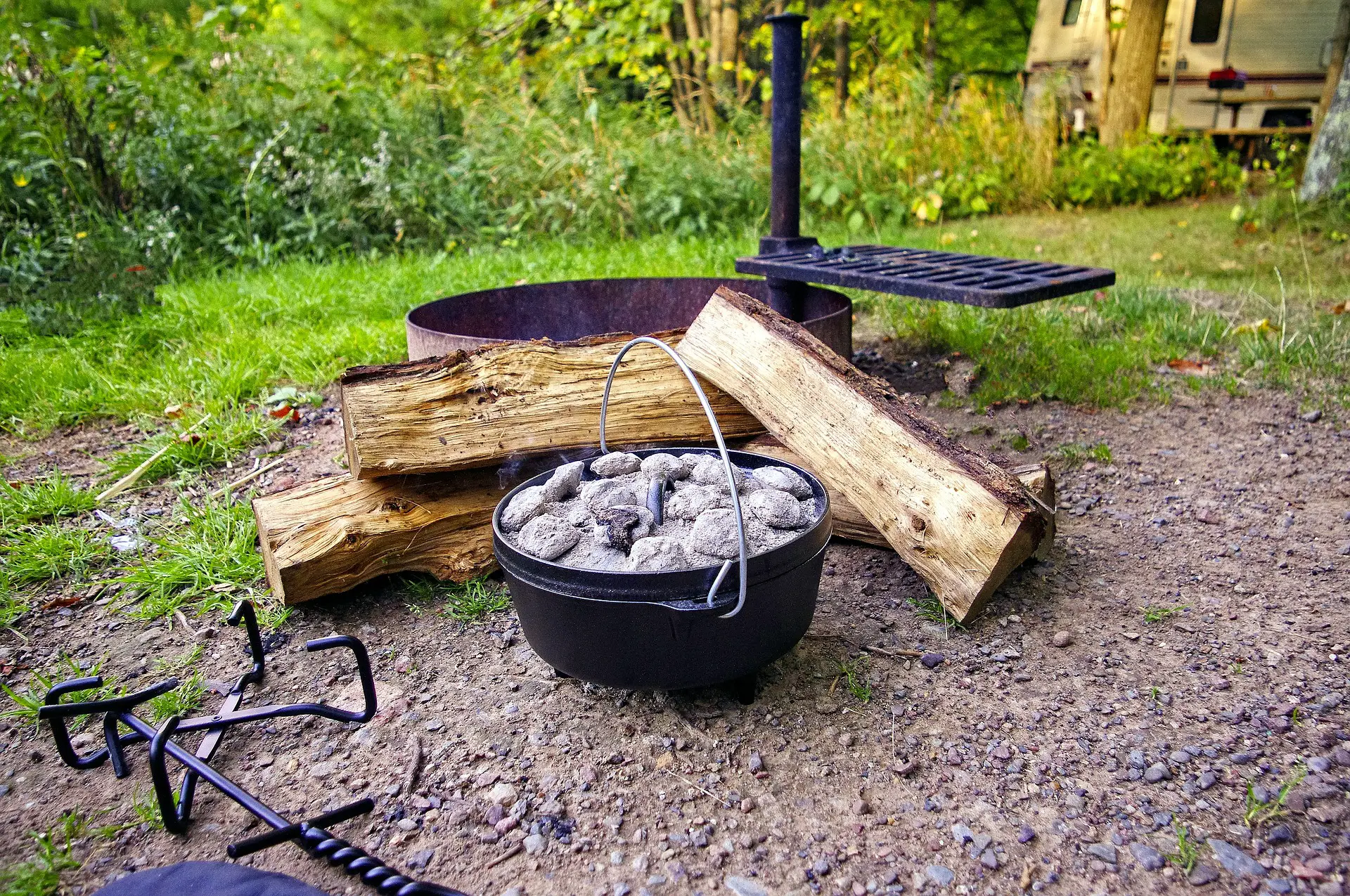Do You Have What It Takes To Climb Mt. Everest?
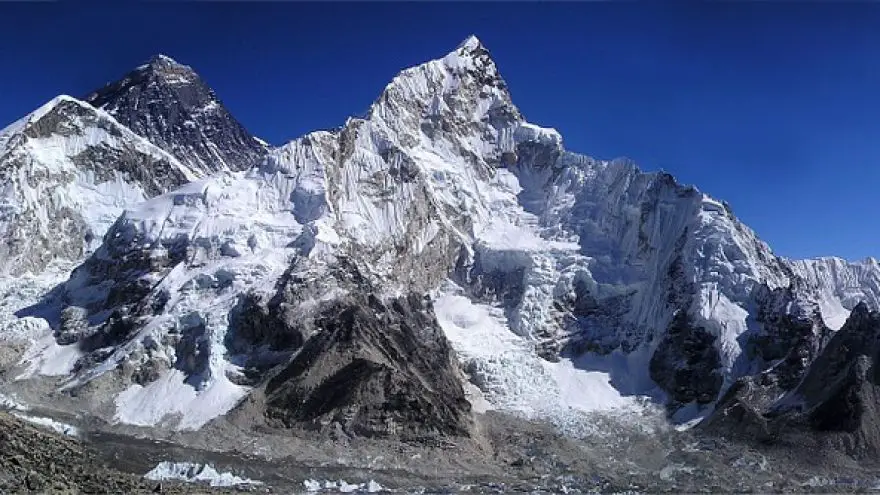 Do You Have What It Takes To Climb Mt. Everest?
thegearhunt.com
Do You Have What It Takes To Climb Mt. Everest?
thegearhunt.com
Each year, over 600 people climb Mt. Everest. Is this something on your bucket list? If so, read on.
Mount Everest is both the most famous and the tallest mountain on the planet. It is both a metaphor and a global beacon that is wrapped in mystery and awe. It also happens to be one of the big mountains that is the most accessible, and it brings hundreds of hopeful climbers and even more than that to its Base Camp each climbing season.
The Height of Mt. Everest
At 8,848 meters, or 29,029 feet tall, Everest happens to be the tallest peak in the world. It straddles Tibet and Nepal.
How Do You Access It?
Most climbers will tackle this mountain on the side that is in Nepal. Beginning at Kathmandu, the bustling capital of Nepal, climbers can take a short flight from there to Lukla, before beginning a 10-day trek to the Base Camp of the mountain that is at an elevation of 17,500 feet. Most people will spend a few weeks in the spring there while they get acclimated to the high elevation with day hikes and rest, and while they wait for the route to the top of the mountain to open in May.
Climber and Success Rates, and Fatalities
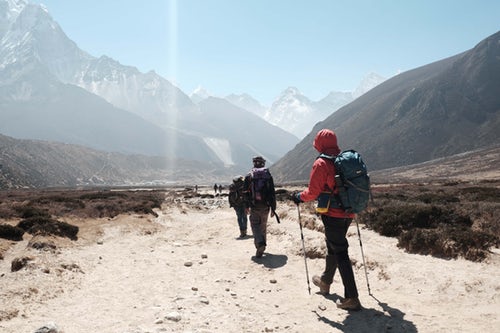 The popularity of this mountain continues to grow. Each year, over 600 people will make it to the top of it, and this is roughly half of those who try, but don’t make it. Or at least, half of the people who pay for the permits to climb it. Nearly 2/3 of the climbers who make it to the top will begin on the southern side, which is in Nepal. The rest will climb on the northern side, located in Tibet. Nearly all of these climbs occur during the very short season for climbing, which is typically just a few short weeks in May. This falls between the monsoons of the summer and the harsh winter.
The popularity of this mountain continues to grow. Each year, over 600 people will make it to the top of it, and this is roughly half of those who try, but don’t make it. Or at least, half of the people who pay for the permits to climb it. Nearly 2/3 of the climbers who make it to the top will begin on the southern side, which is in Nepal. The rest will climb on the northern side, located in Tibet. Nearly all of these climbs occur during the very short season for climbing, which is typically just a few short weeks in May. This falls between the monsoons of the summer and the harsh winter.
In 2017 alone, 6 people died on the ascent, which is a typical statistic. This number included an Indian man right close to the top of the mountain and a cook who was still in Base Camp. There was the 7th death. It was actually a famous mountaineer by the name of Ueli Steck. He died when he fell from a mountain nearby while he was waiting for the climbing route on Everest to open.
Bodies on Everest
Almost 300 people have been known to die on this mountain. The government of Nepal has estimated that of those people, 200 of them are still up on Everest.
Primary Dangers and How People Die
Most of the time, and you can see this in films and books, climbers will die simply from the exposure to the elements. The high altitude and the below freezing temperatures, especially once they have run out of extra oxygen and get caught in sudden storms can be extremely deadly. Many climbers also die from things like avalanches and falls, while others might expire for health issues, such as heart attacks. More and more often, people worry about crowds on the ascent, where the routes can be actually jammed with climbers who are desperately attempting to reach the top of this mountain. Even now, 20 years after first being published, “Into Thin Air” by Jon Krakauer remains a cautionary tale.
Extreme Altitude and Your Body
The area that is above 8,000 meters, or 26,000 feet, and stretches from Camp 4 all the way to the summit, is known as the ‘death zone’ due to brutal weather and thin air. When you go higher in altitude, each breath you take draws less oxygen for your bloodstream and lungs, and this is the reason for most climbers – including the guides – to use supplemental, or extra, oxygen.
The typical effects of climbing so high can include exhaustion, nausea, and headaches. However, in the death zone, cerebral edema caused by the high altitude can mean a loss of muscle control, hallucinations, confusion, and impaired speech. Pulmonary edema caused by the high altitude can cause breathing issues and coughing. Hypothermia, snow blindness, and frostbite are also major dangers.
Who can Climb Everest?
When it comes to scaling this mountain, the main barriers are fitness and money. The government of Nepal has already placed restrictions on foreigners hoping to climb it, with requiring climbers to be 18 or older, making them hire outfitters with guides, and permits that are expensive, they are now considering even more ways to restrict attempts to those mountaineers who are highly experienced.
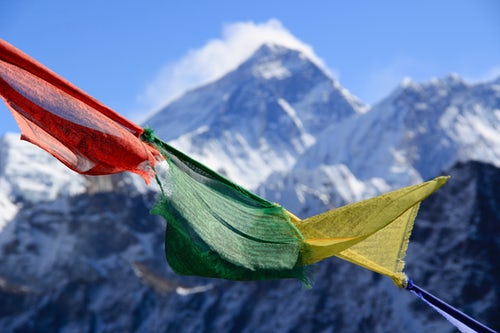
The Cost
The range of cost can be one that is wide. It can go from about $30,000 all the way up to more than $100,000. Foreigners have to buy a permit for $11,000 from the government of Nepal, as well as paying other fees. The variance though, comes with the outfitters that need to be hired. Some outfitters offer Western guides for their Western clients, and this can be quite a bit more expensive than local guides, or some type of hybrid between the guides and climbers. For example, a Western guide for each 4 climbers along with a local guide for each climber. Some of the other substantial costs will include weeks of camping and food while getting acclimatized to the altitude at Base Camp, oxygen, gear, and travel.
Sherpas
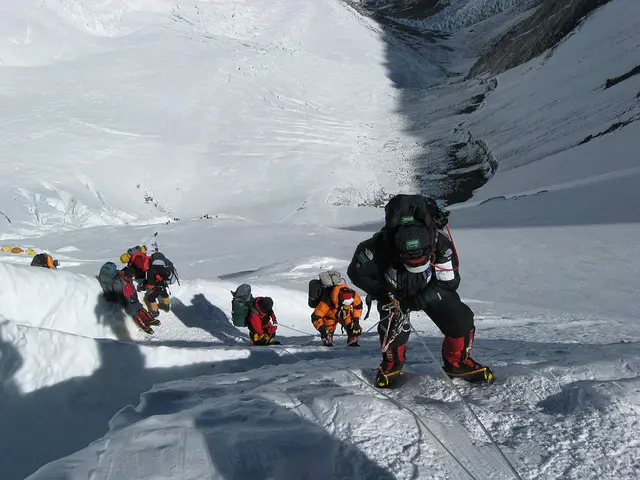 In the Himalayas, guides are typically known as Sherpas, although not all of them are actually from the Sherpa ethnic group that the name comes from. Most of them are younger men who can live anywhere from the chaotic Kathmandu to small villages. These men have discovered that they can make more money working as a guide than they can doing other things. The government of Nepal has reported that most of these guides make about $6,000 for each expedition, but this rate can have a wide range, from the camp cooks who make about $2,500 to the lead guides who can bring in about $10,000. These Sherpas face the same dangers as the climbers and about ½ of those who have died on this mountain have been Sherpas.
In the Himalayas, guides are typically known as Sherpas, although not all of them are actually from the Sherpa ethnic group that the name comes from. Most of them are younger men who can live anywhere from the chaotic Kathmandu to small villages. These men have discovered that they can make more money working as a guide than they can doing other things. The government of Nepal has reported that most of these guides make about $6,000 for each expedition, but this rate can have a wide range, from the camp cooks who make about $2,500 to the lead guides who can bring in about $10,000. These Sherpas face the same dangers as the climbers and about ½ of those who have died on this mountain have been Sherpas.
Mount Everest, when it comes to the world of exploration, is an icon. It is a mountain of both fame and mystery that might have been conquered by many but has still taken more than its share of lives.
This peak is a bucket list mainstay for both aspiring and serious climbers and mountaineers. In order to conquer this peak, it requires a lot of planning, forethought, and training, and you will need to have both the willpower and the stamina to climb it if you don’t want to be disappointed.
Getting There
As discussed above, there are basically 2 routes that will take you to Mount Everest. We talked about the short flight from Kathmandu, but the drive will take you about 7 hours. The more popular way to get there is from Lhasa on the Tibetan side.
Time to Climb
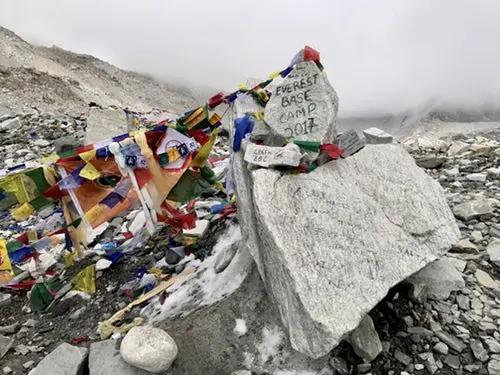 The time it will take you to climb to the very top of Everest will depend on quite a few things. These can include things like the time it will take your body to acclimatize to the thin air found at higher altitudes, your level of fitness, the weather conditions, and the route you take.
The time it will take you to climb to the very top of Everest will depend on quite a few things. These can include things like the time it will take your body to acclimatize to the thin air found at higher altitudes, your level of fitness, the weather conditions, and the route you take.
A good average to plan for is 2 months from the time you begin until you reach the top. This will include time to acclimatize at places like Icefall, the Camps 1 – 4, and then again at the summit.
Miles to the Top
The route on the South Ridge is 12.5 miles long. The route on the Northeast Ridge is considerably longer at 22.75 miles. Neither of these include the 50-mile approach that needs to be trekked.
Altitude
When you go from Base Camp to the top of the mountain, you will be climbing to an altitude of 20,540 feet.
Reaching Base Camp
The average time that it takes to trek from Lukla to Base Camp is a little under 3 weeks. Along the way, you will be ascending to an elevation of 8,000 feet, so it will depend on how slow or fast it takes your body to acclimatize to the thinner air. This means that it could take a shorter or longer period of time.
How to Get There
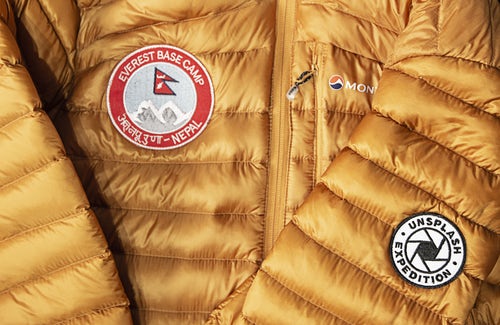 When it comes to base camp, you can either get there in a helicopter or trek to it on foot. If you choose the trekking option, it begins at Lukla and it might take you as little as 10 or as long as 20 days to get there depending on the equipment you will be carrying and the weather. Obviously, the helicopter option will be the quickest way.
When it comes to base camp, you can either get there in a helicopter or trek to it on foot. If you choose the trekking option, it begins at Lukla and it might take you as little as 10 or as long as 20 days to get there depending on the equipment you will be carrying and the weather. Obviously, the helicopter option will be the quickest way.
Base Camp Costs
Most of the trekking packages that will offer all of the bells and whistles will cost you as much as $2000 to get to Base Camp. This cost includes carrying luggage, food, and accommodation. These companies that offer this will also take care of getting the necessary permit.
Necessary Gear
When it comes to conquering Everest, you will need to have all of your ducks in a row in terms of good quality equipment. There will be no point in even thinking about climbing Everest if you will have to skimp on things like mountain clothing and mountaineering gear. If you are planning to reach the summit, you will even need things like equipment for ice climbing as well as supplemental oxygen. If you get in touch with advanced guides, they will be able to give you a full list of what will be needed.
Keep in mind that this is not exactly a Club Med expedition. You will spend a lot of the time uncomfortable. It is rugged and raw, and you will need to be prepared for the absolute worst conditions at all times.
Climbing Season
May will give you the best time of year if you want to climb all the way to the top of Everest. The weather in June and July will change due to the monsoon season and this will bring heavy snow to the ground at higher altitudes and a lot of rain to the lower altitudes.
What it Takes
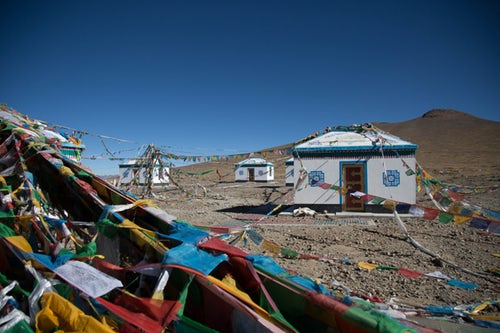 When It comes to climbing Everest all the way to the top, mental preparation is critical. You will also need a high level of both endurance and fitness. Willpower and mental preparedness are critical because the journey is not an easy one and aside from being tough, it is also quite uncomfortable. Your morale can quickly sour if there is trauma on the trek or if anything goes wrong – and something nearly always goes wrong.
When It comes to climbing Everest all the way to the top, mental preparation is critical. You will also need a high level of both endurance and fitness. Willpower and mental preparedness are critical because the journey is not an easy one and aside from being tough, it is also quite uncomfortable. Your morale can quickly sour if there is trauma on the trek or if anything goes wrong – and something nearly always goes wrong.
Your level of fitness is also very important and if you suffer from any sort of blood pressure or heart-related illness, you need to stay at home.
In fact, getting a clean bill of health and going to check-ups are what is needed before you set out on any incredible journey of this nature.
Nutrition & Food
Some of us might envision rations that are vacuum packed for a trek of this nature, but the reality is that at higher altitudes, you need to eat real food in order to make sure that your body is at its peak performance. Foods such as nuts, tuna, salmon, and cheese will all be great choices from a nutritional standpoint.
When it comes to treks like this, you can’t have nutrition that is poor. Keep in mind that on this journey you will be burning massive amounts of energy that you will need to replenish.
In Conclusion
There will be a great deal of preparation and planning to do if you want to climb Everest. What you have read here today is just a bit of the basics. If you want finer details, you might want to get in touch with some of the operators who offer expeditions to the summit.
We here at The Gear Hunt hope that you enjoy planning out this expedition and that you have a safe and wonderful time on your adventures.
Sources
- YouTube, What it Takes to Climb Mt. Everest
- Quora, What Does it Take to Climb Mt. Everest?
- Live Science, How to Climb Mt. Everest in 5 Not-So-Easy Steps
- How Stuff Works, Training to Climb Mt. Everest






